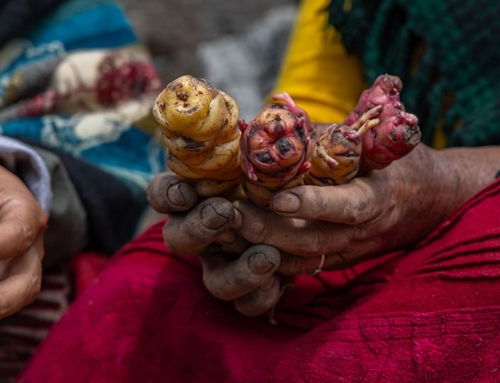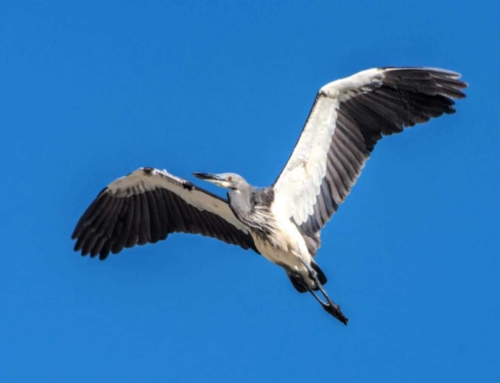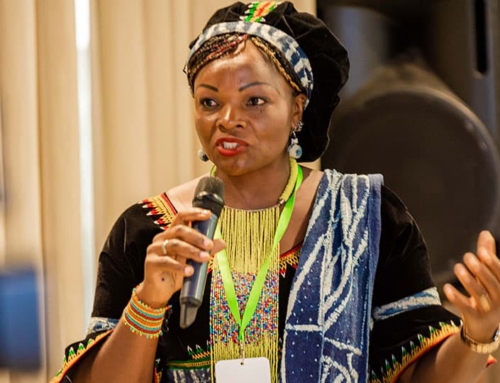Wildlife corridors through oil palm plantations. Local communities saving the world’s rarest crocodile from extinction. Sweeping new protections for EU seabed. A ground-breaking coalition for amphibian conservation. When conservation organisations have access to flexible, reliable funding, their impact can be revolutionary.
In this series, we look back at major conservation victories facilitated by our long-term, trust-based funding strategy. Long-term support goes far beyond funding. Building strong relationships with multiple organisations allows Synchronicity Earth to aid capacity building, facilitate collaboration, and strengthen connections. Sometimes, those networks can save a forest.
Coming together to protect one of West Africa’s last amphibian havens
The Guinean Forest extends along the coast of West Africa, from Guinea and Sierra Leone, through Liberia, Côte d’Ivoire, Ghana, Togo, Benin, and Nigeria, to Cameroon’s Sanaga River. One of the most degraded tropical rainforests in the world, today less than 30% of the Upper Guinean Forest survives. Yet it remains one of the most biodiverse ecosystems on earth.
The Guinean Forest is well known as a mammal hotspot, and for good reason—more than one-quarter of Africa’s 1,100 mammal species are found here, including 30 species of primates. But the amphibians, although less well documented, are no less important for global conservation. Of the 269 amphibian species recorded in the region, over 80 are endemic, and around 30% are threatened with extinction.
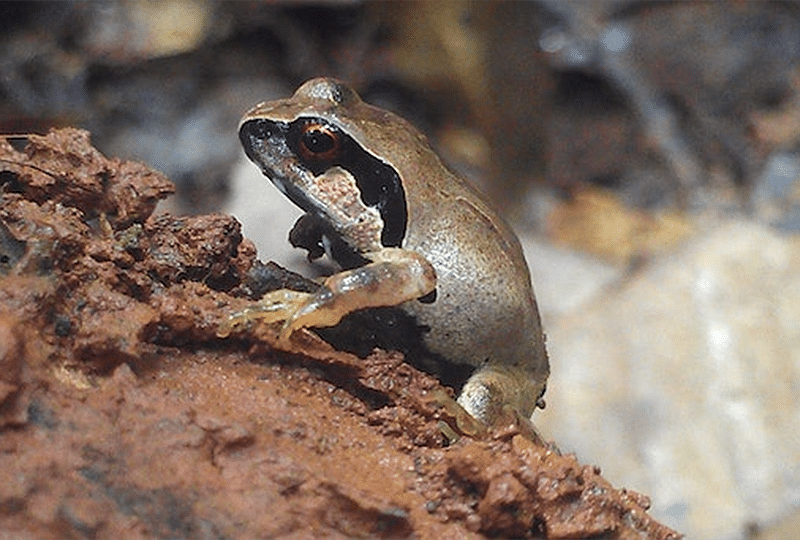
The giant squeaker frog can measure up to 50 mm, about three times the size of the smallest squeaker (about 15mm) and therefore a ‘giant’ of the squeaker frogs despite being the size of a double A battery… Image: Save Ghana Frogs.
Giant squeaker frog
Today, many species are limited to individual fragments of the forest. One of these is Sui River Forest Reserve, which is the sole remaining home of the Critically Endangered giant squeaker frog. The name is a bit of a misnomer—although the largest of the squeaker frogs, the giant squeaker is about 5 cm long.
Scientists first documented the frog in the Krokosua Hills Forest Reserve in southwest Ghana. Since then, that forest has been heavily degraded by logging and agriculture, and the giant squeaker frog has disappeared from the area.
Save Ghana Frogs founder Gilbert Adum has made it his life mission to save the giant squeaker frog from extinction. He grew up as a member of a hunting community in northern Ghana, and his childhood aptitude for science led him to study wildlife conservation, and in 2009 his team rediscovered a population of giant squeaker frogs in Sui River Forest Reserve.
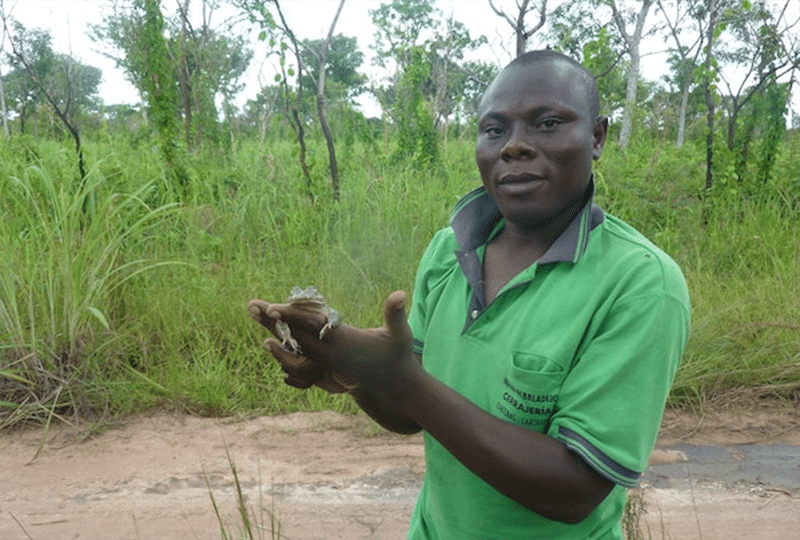
Gilbert is one of Africa’s leading amphibian conservationists and co-founder of Save Ghana Frogs. Image: Gilbert Adum
Sui River Forest
Beyond the Giant Squeaker, Sui River Forest Reserve is a haven for native biodiversity. Save Ghana Frogs has documented an astonishing 574 species in the reserve, including 31 amphibians, 277 butterflies, and 33 mammals, including the white bellied pangolin. 14% of wildlife in the reserve appears on the IUCN Red List, and much of the remaining biodiversity is locally threatened by poaching, logging, and the continuing intensification of agriculture.
Since 2013, Save Ghana Frogs has worked tirelessly to protect and restore Sui River Forest. By planting more than 50,000 native trees, its team has reforested 25 hectares of land since 2014, linking riverbanks with the giant squeaker frog’s key breeding sites and migration corridors. It has also established three community tree nurseries (Yawkrom, Wansampo and Sikaneasem) to ensure a reliable supply of saplings and has collaborated with local people living alongside the reserve to create alternative livelihoods that don’t degrade the forest.
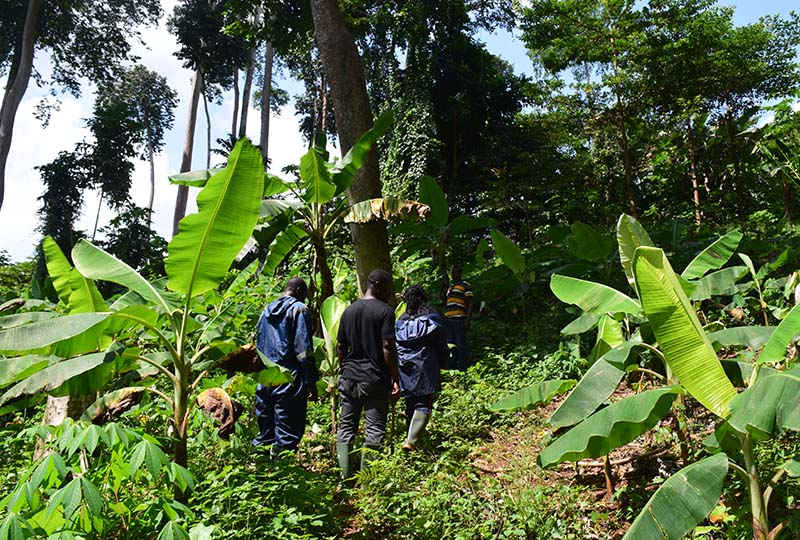
Save Ghana Frogs is one of very few conservation organisations working in three Ghanaian sites of global significance for amphibians: Sui River Forest Reserve (pictured), Ankasa Conservation Area, and Atewa Forest. Image: Anna Heath
A forest cleared for tree-planting
However, when members of the team returned to the site in 2021 after the Covid-19 pandemic, they were horrified. A huge area had been logged without warning, and planted with fast-growing cedar. These trees were being farmed to sell as timber, and to meet global tree planting targets. Part of Sui River Forest Reserve had been mislabelled as degraded land suitable for planting, and not valuable native forest. Gilbert estimated that 10% of the giant squeaker’s territory had been lost.
Synchronicity Earth responded by sending out an emergency call to our other amphibian partners. A Rocha Ghana, a long-time ally, set up meetings with the local forestry department, enabling Save Ghana Frogs to negotiate for a large portion of the land to be officially returned to it and placed under its management.
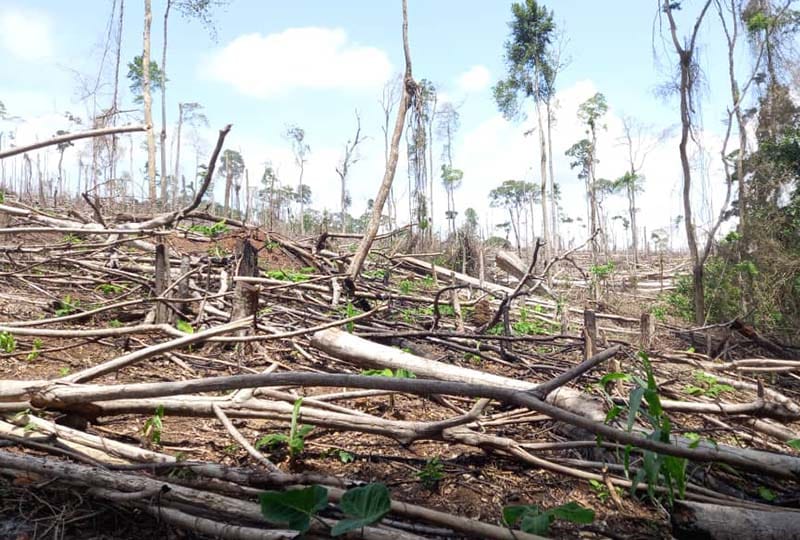
This area of forest was cleared to meet tree-planting targets. Image © Save Ghana Frogs
An emergency alliance
Then Amphibian Survival Alliance, supported by Synchronicity Earth since 2011, along with newer partners Amphibian Ark, the IUCN SSC Amphibian Redlist Authority, and Herp Conservation Ghana, worked with Save Ghana Frogs to formally assess the conservation needs of all amphibians in the reserve. This enabled Save Ghana Frogs to get Sui River Forest Reserve classified as a Key Biodiversity Area and an Alliance for Zero Extinction Site – the first international recognition of the Reserve’s unique biodiversity.
Collaboration helped transform a disaster into a victory for the whole of Sui River Forest Reserve, which is now substantially better protected than it has ever been. Furthermore, these new connections between several influential amphibian conservation organisations help to strengthen the broader movement, in Ghana and around the world.
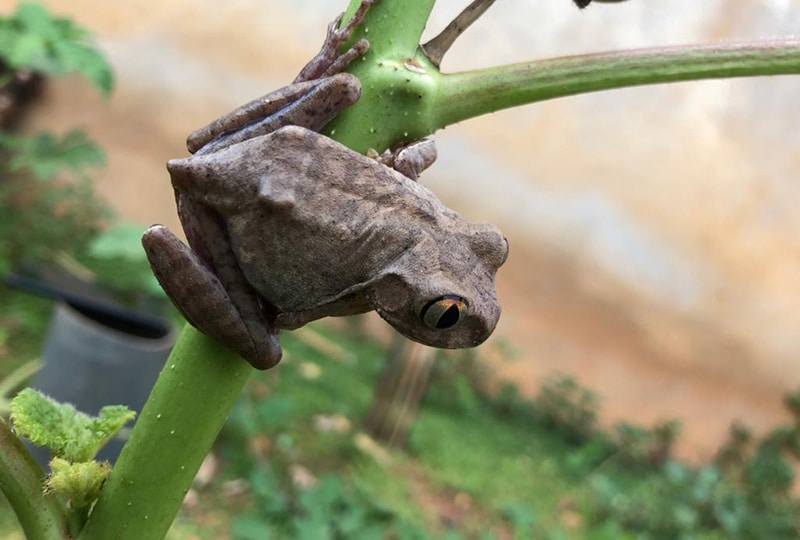
Thanks to the emergency alliance, Sui River Forest Reserve is now classified as a Key Biodiversity Area and an Alliance for Zero Extinction Site – the first international recognition of the reserve’s unique biodiversity. Image: Save Ghana Frogs
The story also illustrates the stark divide between community-led, long-term conservation, and top-down, one-size-fits-all ‘solutions’. The destruction of Sui River Forest was partially driven by the push to reach tree planting targets – targets pushed by many Western governments, corporations, and non-governmental organisations (NGOs).
These short-term solutions literally miss the forest for the trees, failing to differentiate between biodiverse native forest, and monoculture tree plantations. They might report impressive short-term gains, but they fail to build resilient ecosystems, and threaten the bonds between communities and their forests.
In the few years we have supported Save Ghana Frogs, we have been continually impressed not only by the number of trees planted and hectares restored, but by the organisation’s deep roots in local communities, both human and not. It is those roots, nurtured over a lifetime of work, that can save a forest—and a species.

